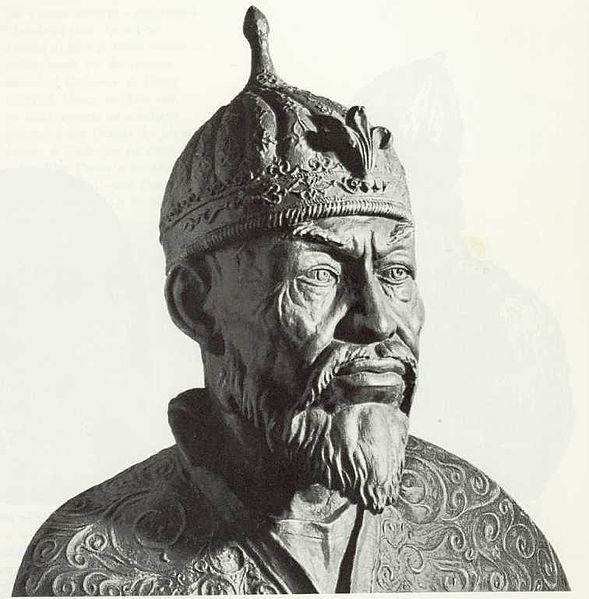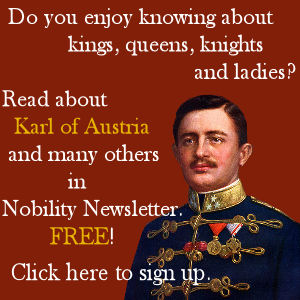By Plinio Correa de Oliveira
FEB-2015, Saints of the Day, 2 September 1964 & 10 September 1971
Hungary, a Bulwark of Christendom in the West
Today we will look at some aspects of the life of St. Stephen, King of Hungary.[i]
Commenting on the life of St. Henrik, Emperor of the Holy Roman German Empire, we saw how he was interested in the conversion of the Hungarian people. For this end he promoted the wedding of his sister Gisela with St. Stephen, who was still pagan. The king’s conversion was made possible by the actions of Saint Henrik, Queen Gisela and holy preachers who went to Hungary; and his conversion made the conversion of the Hungarian people easier.
After its conversion, Hungary became a bastion of Christianity in the West and acquired a very important role in Christendom as a whole, defending it against Islam. Indeed, today’s Communists are to Christendom what Muslims were to Christendom from the sixth century to the beginning of the eighteenth century, therefore, over a thousand years.
The Mohammedans, mostly Arabs, also managed to persuade the Turks of their erroneous beliefs. And they began to occupy half of the Mediterranean coast, which corresponded to the whole of North Africa. They even managed to occupy, for a long time, most of Spain, almost all the way to Poitiers, and much of Portugal. In the Near East they occupied the Holy Places, took Constantinople and some surrounding areas, and went all the way to Albania, which is still more or less Mohammedan. All that formed a huge empire.
Conquering Rome, the Ultimate Goal of Islam
So we had the Mediterranean, considered at that time the center of the world (Mediterranean means ‘in the middle of the earth’) divided into two blocks: a great Catholic bloc formed by almost all the nations of Europe, including the reconquered Spain; and a Mohammedan block which took up North Africa, Asia, and part of the Balkans.
There was continuous friction between the two blocks, a warfare of a religious nature. And the most attacked places were located in the two extremes of Europe: the Iberian Peninsula, where Spain and Portugal are located, and on the other side, Hungary.
From Constantinople, the Islamists came out in hordes with the aim of reaching Hungary, moving on to Austria and taking Vienna, and ultimately marching south to Italy and occupying Rome and the See of St. Peter.
Emperor Bajazet [also known as Tamerlane], who was perhaps the most famous of the Mohammedan leaders, said he wanted to make his horse eat at the altar of St. Peter, as from a trough.
On the western side, the peoples that resisted the Mohammedan invasion were the Spanish and the Portuguese, a fact that made them famous for their heroism. However, the role played by the Hungarians in that struggle was not sufficiently focused upon.
Indeed, the Hungarians countered Mohammedan pressure by defending the West’s outer borders in Eastern Europe from the pincer movement of Mohammedans. They fought heroic wars and battles with saints fighting by their side, miracles, etc. It was an epic saga whose highlights can legitimately be compared to the heroism of the Spanish and Portuguese against the Muslims.
The conquest for the faith of that “bulwark nation” to which Europe largely owes its integrity facing the Mohammedan attacks, of that people that also managed to strongly resist Protestantism (only a small part of Hungary went over to Protestantism) made the country a nation with an extremely strong Catholic majority.
Therefore, the conversion of this people had a number of consequences for the history of the West and of Christendom.
[i] Stephen (977-1038), was the son of Geyza, Duke of Hungarians, who had converted to Christianity. His education was so elaborate that “the knowledge that illustrated his intelligence and the virtues that adorned his soul made of Stephen the most complete prince of his century.” Elected duke in place of his father, he built churches and monasteries and had priests and religious recommended for their piety come from other countries to evangelize his people. He ruled with wisdom and prudence, and his virtues and zeal for the faith earned him from the Pope the royal crown with the title “Apostolic King.” Stephen submitted his crown and states to the See of Peter and consecrated his kingdom and person to the special protection of the Mother of God, so he only referred to the Hungarian State as “St. Mary’s family.” Like all the elect of Christ, Stephen was awarded His cross. For three years he was plagued by a violent and acute pain; his sons died leaving only the oldest, Emeric. In him Stephen had placed all his hopes because of his disposition to virtue. Emeric was the solace of his life and the hope of his old age. But God also wanted to take him to the kingdom of Heaven, for which he was so mature that he was thereafter raised to the honor of the altars. St. Stephen died on Assumption day of the year of the Lord 1038 and was canonized by Pope Innocent XI in 1686.












